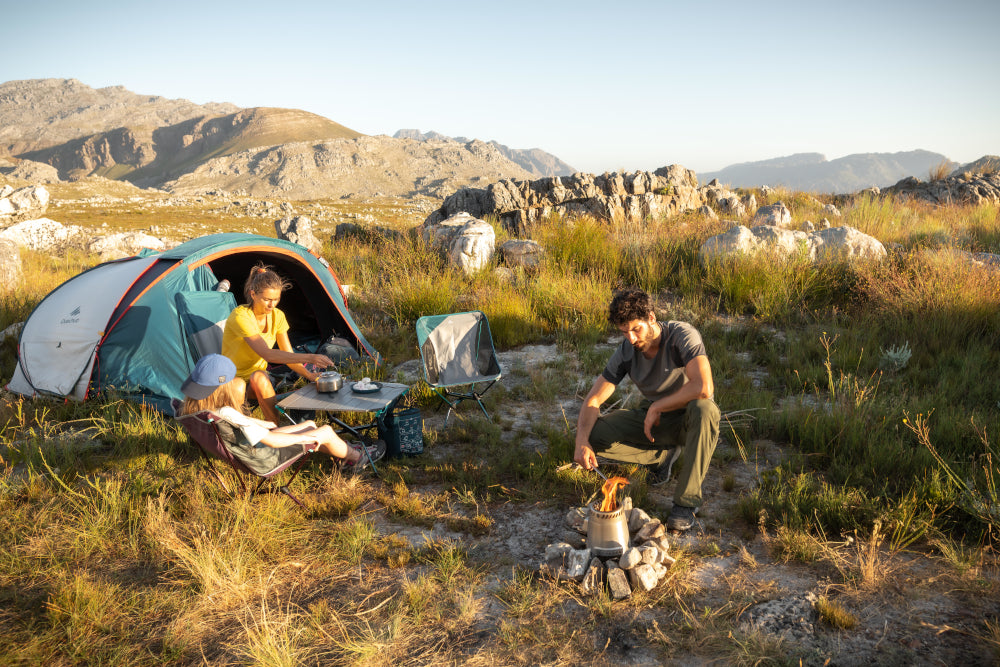
How to Protect Yourself from Ticks When Out Hiking
Share
1. What is Lyme Disease?
The disease was firstly discovered in the USA in the small town of Old Lyme, hence its name. The disease is prevalent in 80 countries. In France, the disease is often passed on by blood-sucking ticks: ixodes ricinus, which live in wooded and damp areas.
It is an infection caused by bacteria: borrelia. It can be passed on at any stage of the tick's life, from the larva stage to the female adult stage and the nymph stage. Now for some good news: the disease is not contagious and does not have any after-effects if treated relatively early.
Untreated Lyme disease can cause skin, bone, neurological and more rarely, cardiac problems a few weeks or months subsequent to the bite. Serious cases are very rare.
2. Recognize Risky Situations
Ticks are present in wooded and damp areas. They appreciate long grass which serves as a trampoline from which to jump on to your skin or your dog. Contamination occurs primarily between April and November. Ticks can be found all across France.
In France, the percentage of infected ticks generally varies between 5 and 20 compared to 100% in certain American regions. The figures on this disease are rare and should be taken with a grain of salt. You must consider the limits of studies and the number of cases recorded which represents a small sample to precisely estimate the number of actual cases. The number of cases has increased slightly in recent years, however it reduced in 2014.
Some regions are known as hotspots for ticks. As the tick is a known parasite for animals and information on Lyme disease is more and more widespread, you can find some distribution maps of tick populations and cases of bites. Be aware, a concentration of infected ticks may vary within a department/county or even within the same forest!
3. Responding Correctly if You're Bitten
Although prevention remains the best way of protecting yourself from ticks, by following Floraine's tips further down in this article, you will know how to react if you are bitten anyway. If you discover a tick when hiking or after returning, remove it quickly and correctly! The bacteria is only passed on 24 to 48 hours after being bitten. However, beware, this risk increases if the tick is stressed. Avoid traumatizing it with disinfectant sprays or any aggressive products. Avoid pressing it otherwise it may regurgitate!
Two methods can be used to correctly remove a tick
- Use tick tweezers sold in the pharmacy or specialist store. This very recognizable tool is shaped like the foot of a doe. After catching the tick as close to the skin as possible, turn the tick tweezers to unscrew the tick.
- If you do not have tick tweezers, you can use eyebrow tweezers. Take the tick by the head, as close to the skin as possible, to avoid pinching it and making it regurgitate. This time, do not turn. Remove the tick straight.
- Always disinfect after having removed the entire tick.
4. Recognizing the Signs of an Infection
If 3 to 30 days after being bitten, you see a target shaped red shape which extends into a circle, form on your skin, see your GP.
Your GP will prescribe an antibiotic treatment if necessary. But antibiotics are not necessarily automatically prescribed: your treating GP must assess the bite in order to provide the correct treatment.
5. Tips from Floriane, A Mountain Guide
Ticks often hide in the forest, on the ground, on low branches and in the grass (sometimes, in gardens). Hikers must therefore protect their legs as a priority. Wear:
- Pants instead of shorts . There are adjustable pants which you can turn into shorts when walking in non-wooded areas, places without high grass, then they can be re-zipped into trousers when in risk areas.
- A long-sleeved shirt, instead of a t-shirt.
- A hat. In fact, the fine skin of long-haired leather represents, just like the fronts of knees or the inside of elbows, fine skin greatly appreciated by ticks.
Tip: where the clothing is light, you can see ticks more clearly and therefore more easily get rid of them after hiking or when stopping for a rest.If you stop for a break in the forest or a clearing, do not hesitate to protect yourself by placing a plaid on the ground.
Tip: it is a good idea to tuck trouser bottoms into socks to prevent anything from getting in. Ok, it does not look great, but it is very effective.
Use a repellent
For excellent protection, you can also use an insect and tick repellent applied to your skin and/or your clothing. Warning, some products are not suitable for children. Always take tick tweezers with you in your first aid kit
Once your hike has finished, check that you have not been bitten.
To do this, check your entire body, from your head to your toes, for ticks. If a tick has bitten you, the safest thing is to remove it with tick tweezers, cleaning the bite area. See your GP if you have any doubts.
Once your hike has finished, check that you have not been bitten.
You are all set to hike with peace of mind!















